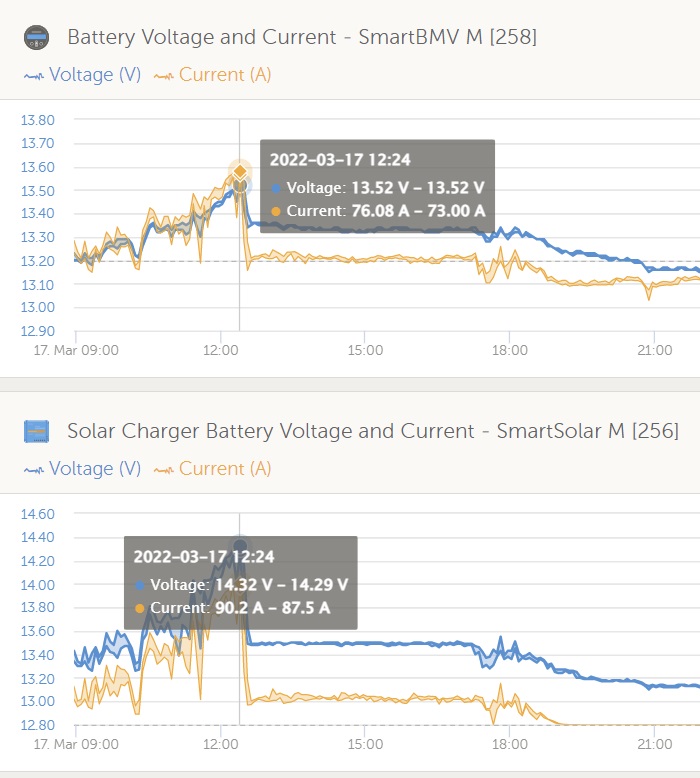I have a BMV-712 and SmartSolar MPPT 150/100 managing my Relion RB300 Lithium batteries. I have VE.smart networking to report the battery voltage and current to the MPPT. The MPPT reports a battery voltage of 14.0 volts while the BMV shows 13.5V. Should they not be the same if VE.Smart is reporting the battery voltage? There is a drop in voltage due to the cable length between the MPPT and where they connect to the battery bank, but the VE.Smart should take care of this.
Any ideas?

